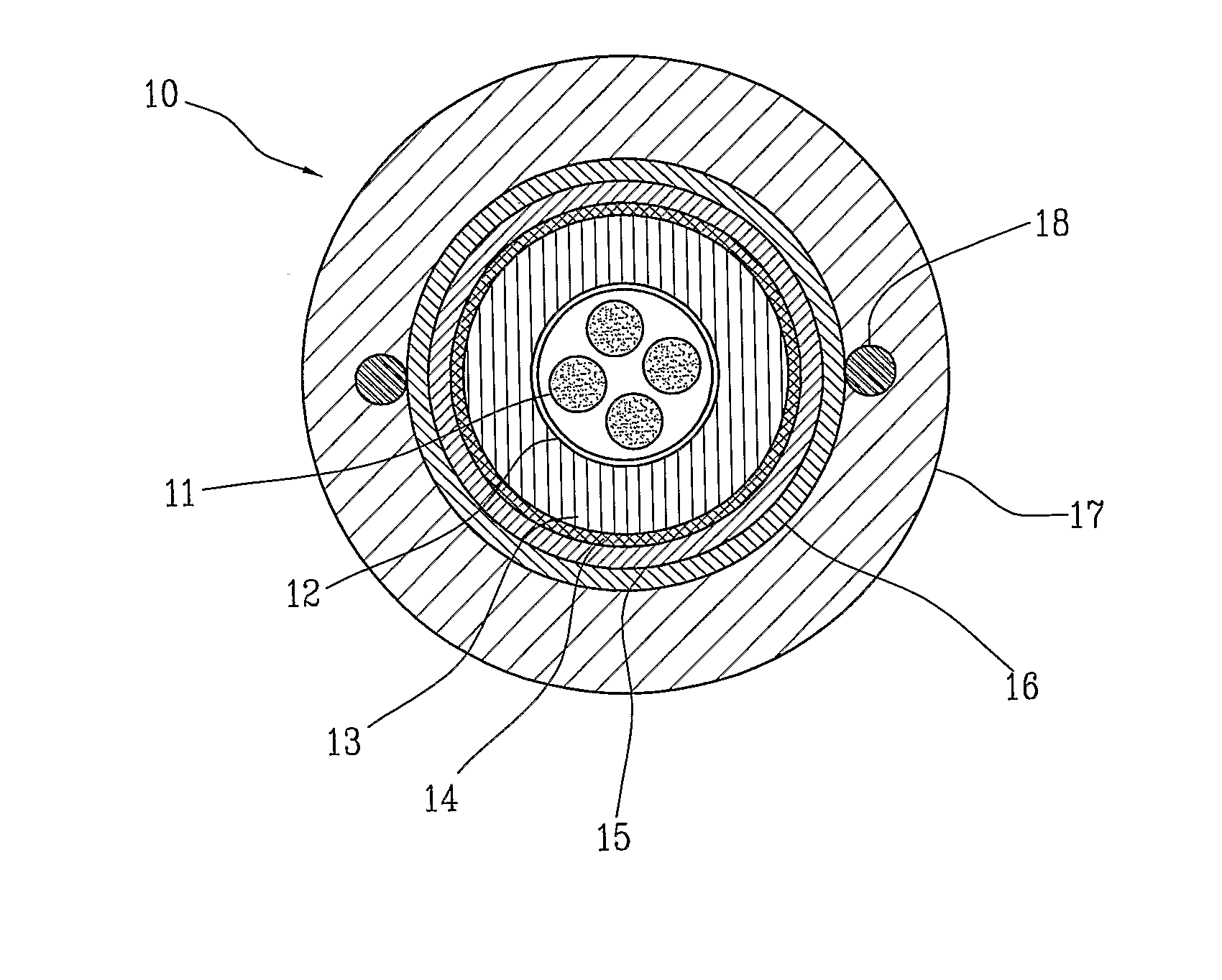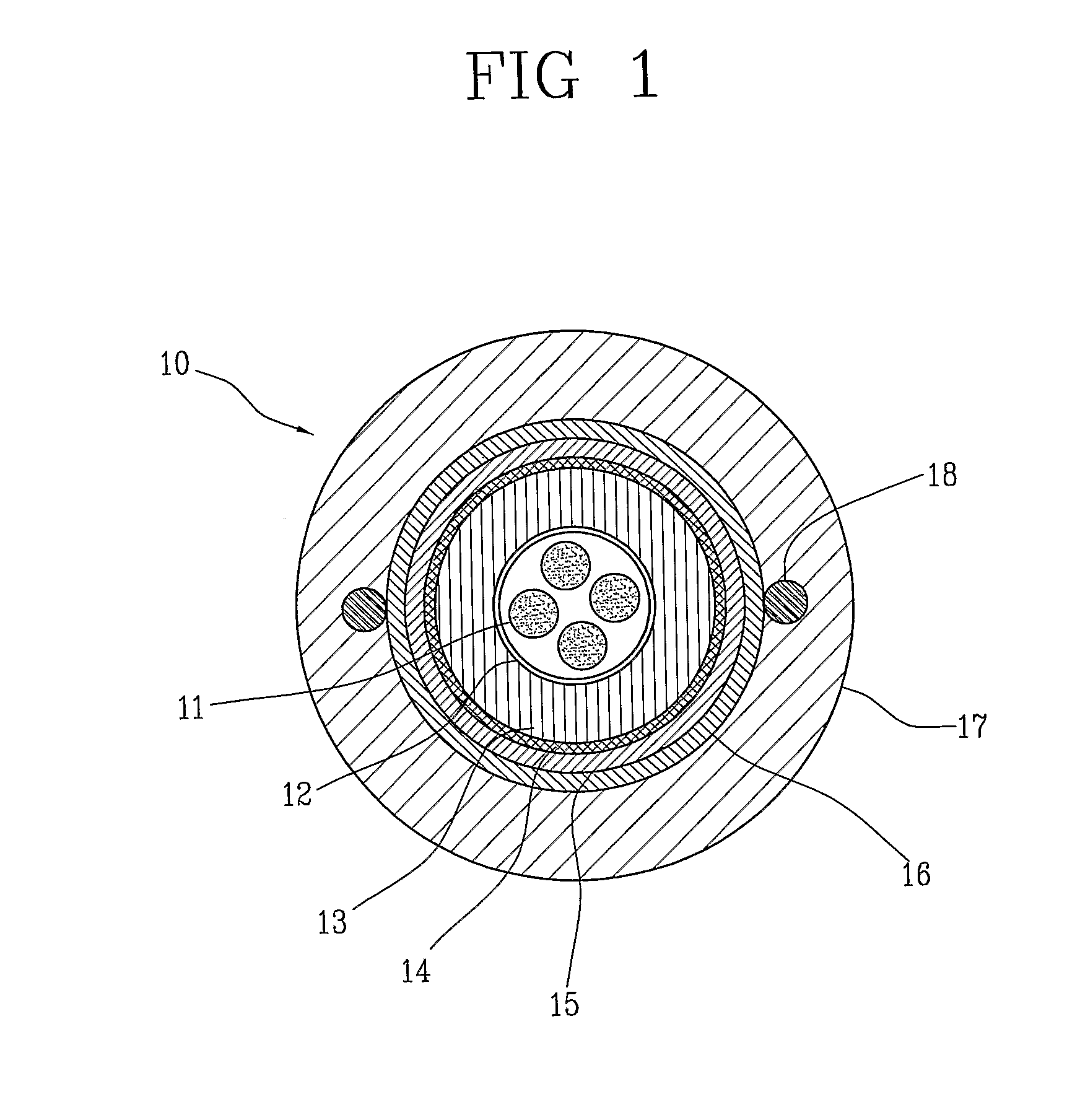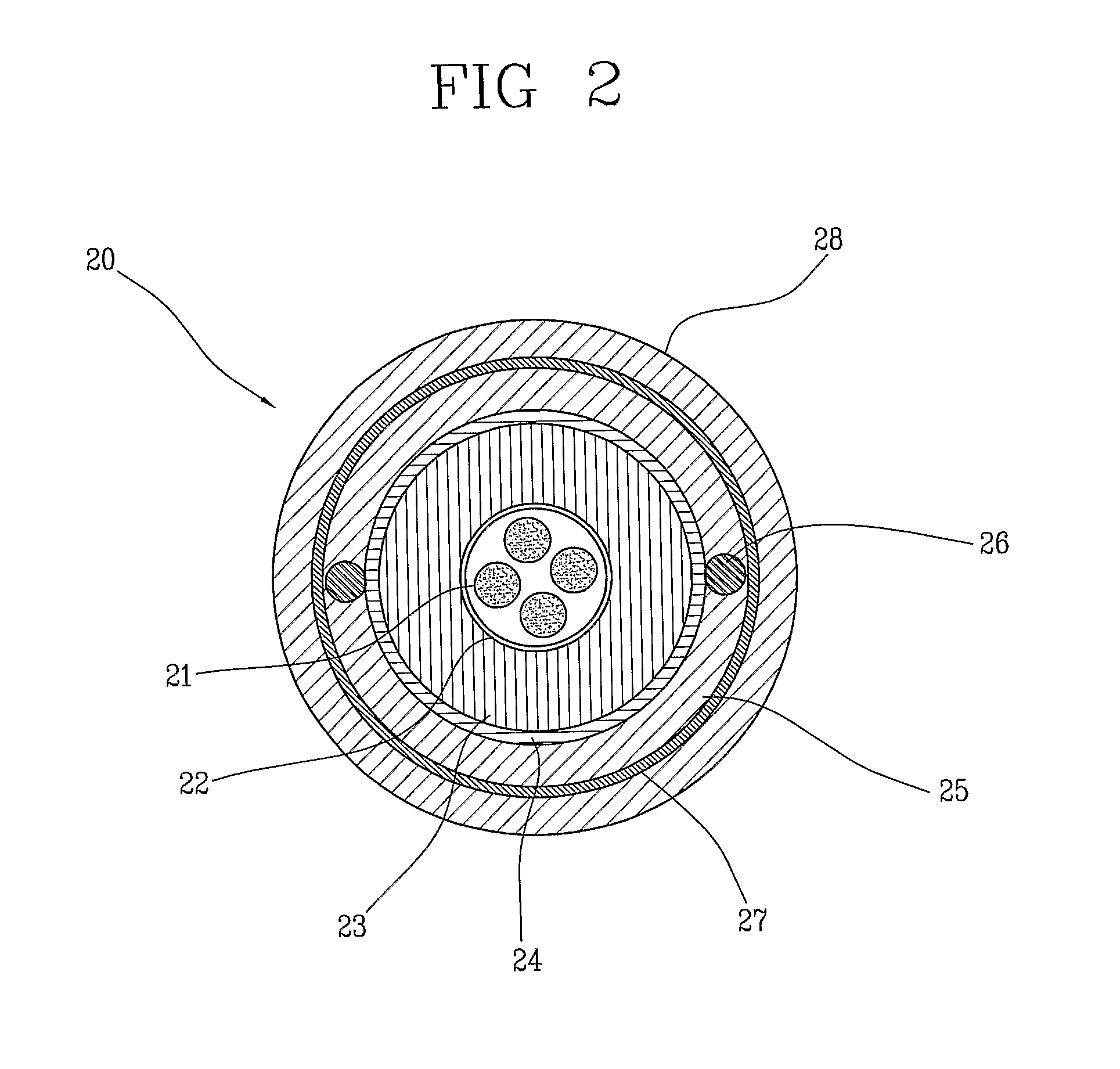Fire resistant optical cable
a technology of optical cables and fiber optic cables, applied in the direction of cables, insulated conductors, instruments, etc., can solve the problems of difficult to achieve high fiber density cables, scarcely effective, and increase the dimensions of final cables, so as to improve the resistance to transversal mechanical stresses and increase the mechanical performance of cables
- Summary
- Abstract
- Description
- Claims
- Application Information
AI Technical Summary
Benefits of technology
Problems solved by technology
Method used
Image
Examples
example 1
[0083]In a tubular element made from polyethylene, 12 optical fiber micro / nodules were housed. Each micromodule was constituted by 12 optical fibers inserted into a buffer tube of flame retardant polyethylene (Casico FR4805), having an internal nominal diameter of 1.1 mm and an external nominal diameter of 1.4 mm. The buffer tube was filled with a water blocking filler based on silicone gel.
[0084]The tubular element was surrounded by an armour made from a corrugated steel tape longitudinally wrapped and thermally sealed along the overlapping, and then by an outer jacket made from polyethylene, provided with two longitudinal strength members embedded into the outer jacket itself.
[0085]The above optical cable specimen was subject to a test of fire resistance according to international standard TEC 60331-25 (1999, 1st Edition). A cable sample was positioned horizontally by means of two supports and a burner was placed under the sample at a distance of about 75 mm. Propane gas fed the b...
example 2
[0088]A cable specimen was produced according to FIG. 1 (but without the all dielectric armour (14) and the water swellable tape (15)), by using 12 optical fiber micromodules as described in Example 1. The flame shielding layer was constituted by the same corrugated steel tape of Example 1. The tubular layer was made from a ceramifiable material having the following composition:
Engage ™ 820023.3% by weightVulkanox ™ HS / LG0.7″Moplen ™ RP 210 G5.8″Whitetex ™23.3″Dynasylan ™ VTMOEO0.1″Glass frit12.7″Nanofxl ™ 55.8″Mistroborid ™ R10 C29.2Engage ™ 8200: ethylenel / 1-oetene copolymer (Dow);Vulkanox ™ HS / LG: 2,2,4-tritnethyl-1,2-dihydroquinoline, polymerized (TMQ antioxidant) (Lanxess);Moplen ™ RP 210 G: propylene homopolymer (Lyondell Basell);Whitetex ™: calcined clay (Engelhard);Dynasylan ™ VTMOEO: vinyltris(2-methoxyethoxy)silane (Degussa);Nanofil ™ 5: functionalized lamellar nanofiller (Rockwood);Mistrobond ™ R10 C: talc (Luzenac).
[0089]The final cable had the following characteristic...
example 3
[0092]A cable specimen was produced according to Example 2, but without the corrugated steel tape. During the flame resistance test the ceramifiable layer burned and the optical fibers broke.
PUM
 Login to View More
Login to View More Abstract
Description
Claims
Application Information
 Login to View More
Login to View More - R&D
- Intellectual Property
- Life Sciences
- Materials
- Tech Scout
- Unparalleled Data Quality
- Higher Quality Content
- 60% Fewer Hallucinations
Browse by: Latest US Patents, China's latest patents, Technical Efficacy Thesaurus, Application Domain, Technology Topic, Popular Technical Reports.
© 2025 PatSnap. All rights reserved.Legal|Privacy policy|Modern Slavery Act Transparency Statement|Sitemap|About US| Contact US: help@patsnap.com



